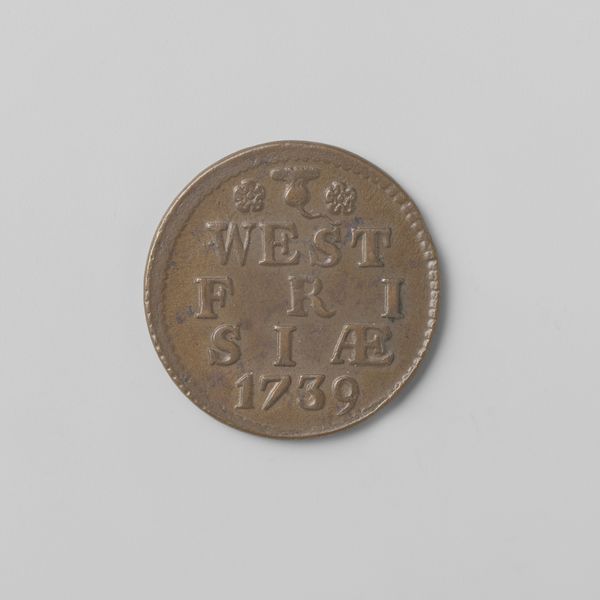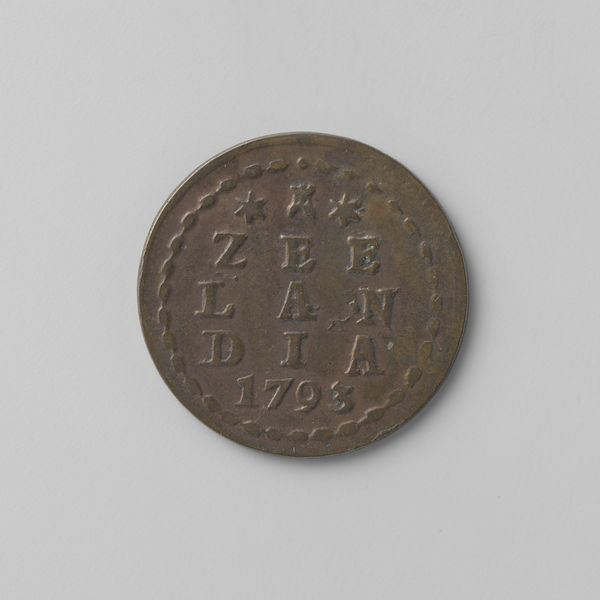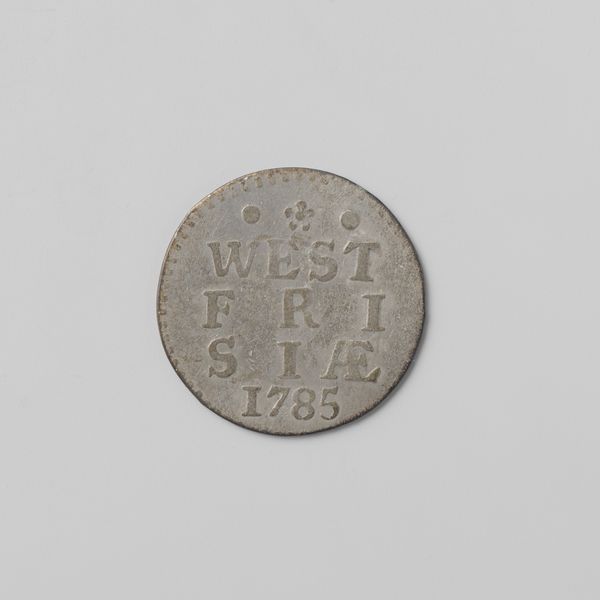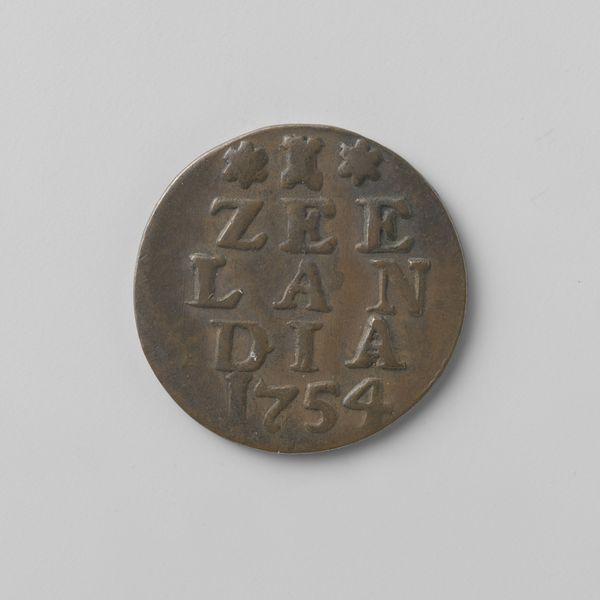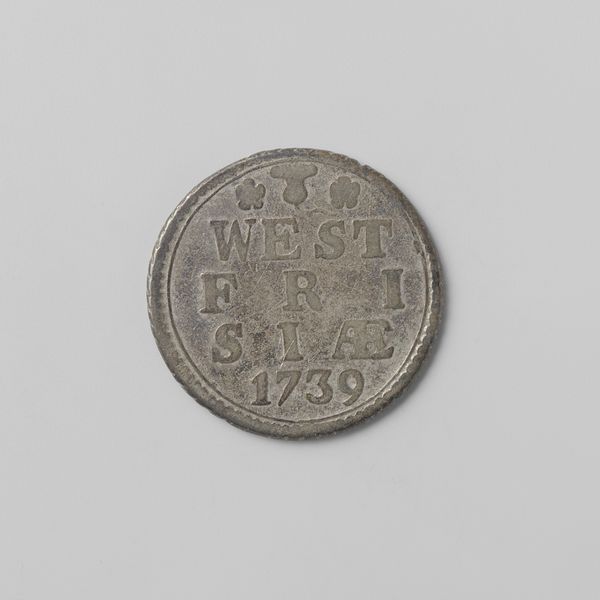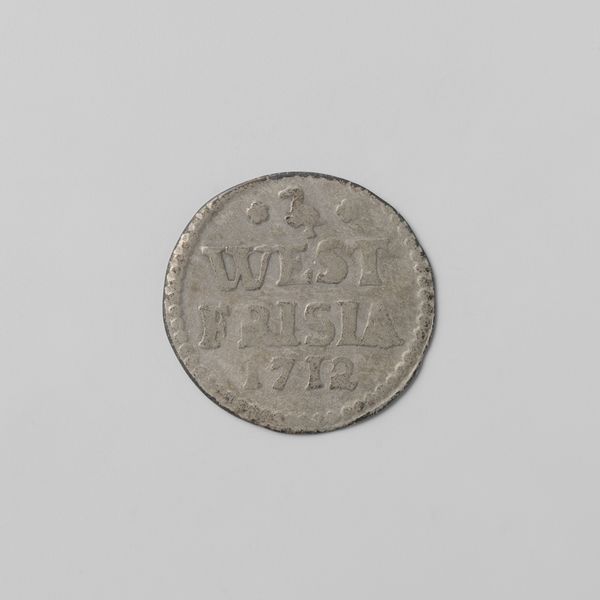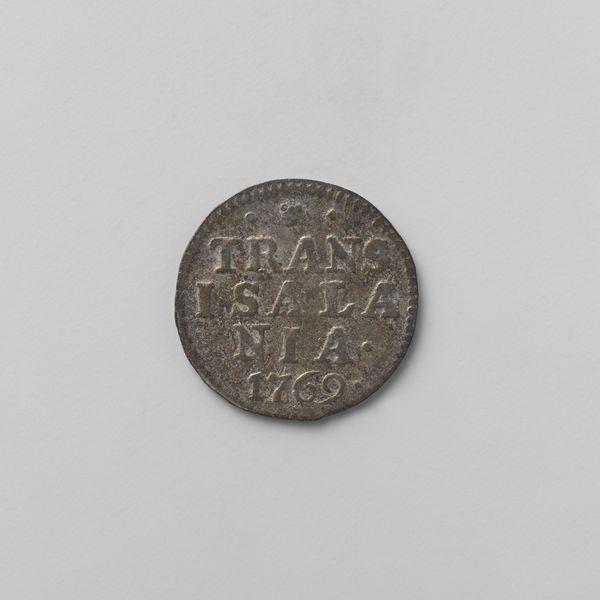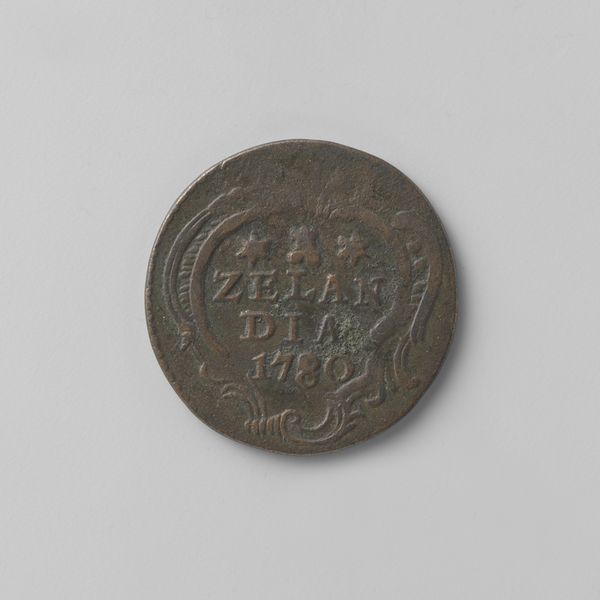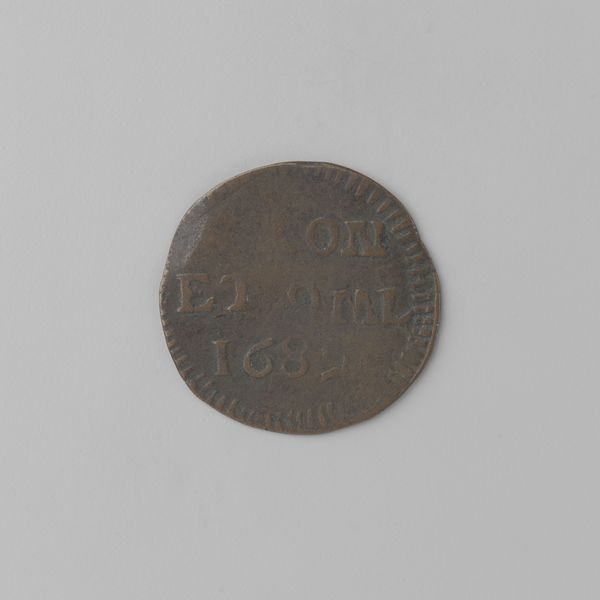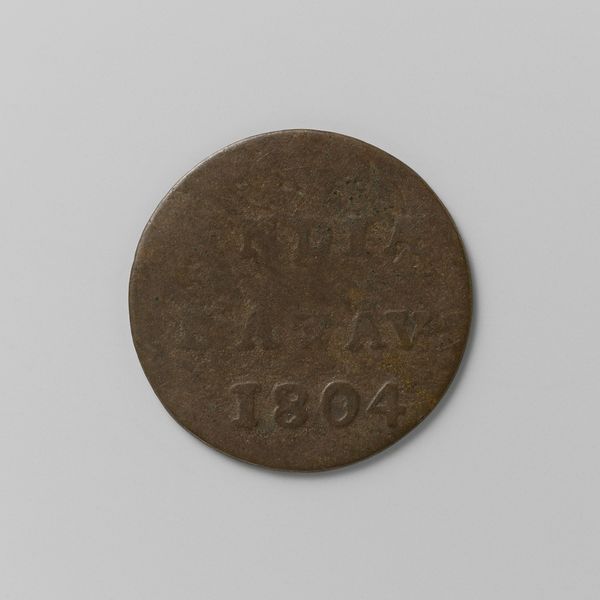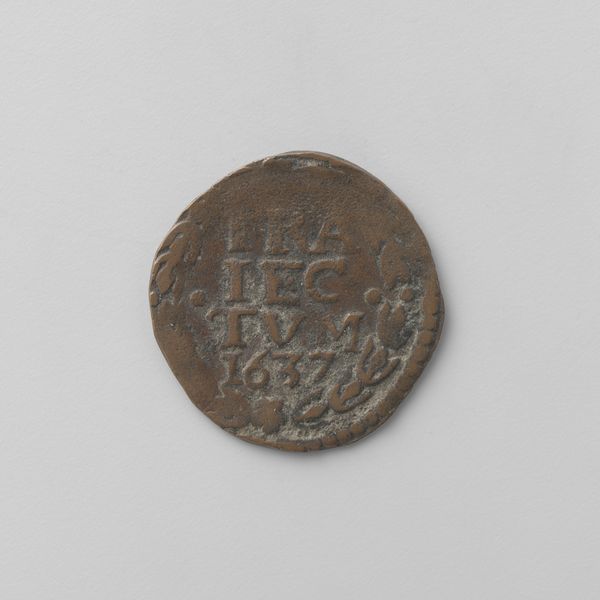
print, metal
#
portrait
# print
#
metal
#
ancient-mediterranean
#
embossed
Dimensions: diameter 2.2 cm, weight 3.13 gr
Copyright: Rijks Museum: Open Domain
This is a Westfriese Duit, made in 1742 by the local government of West Friesland, in the Netherlands. It’s made of copper, a relatively inexpensive material at the time. The coin’s design and manufacture speak volumes about the relationship between art and commerce. It was die-struck, a process that uses a hardened punch to impress an image onto a metal blank. The resulting image is crisp and repeatable, essential for mass production. The images include the coat of arms of West Friesland, and the year of production. The creation of coins like this duit was a highly controlled process. The copper itself would have been mined, smelted, and refined, requiring extensive labor. The design was carefully considered, and the striking itself would have been done by skilled workers, under strict supervision. So, while this duit may seem like a humble object, it’s a potent reminder of the complex processes and social relationships that underpin even the most everyday items. It invites us to consider the value we place on materials, making, and the wider economic context.
Comments
No comments
Be the first to comment and join the conversation on the ultimate creative platform.
